Photographs by Stefano Ruzzante, text by Alberto Finotto, English translation by Mauro Gambini.
A model is posing and a photographer shoots. The magic (if one can talk of magic) is all here.
(Stefano Ruzzante)
The intimate gaze follows Alice to the secret door, holding one’s breath emotionally in wait, the heartbeat held back by marvel. After a passage in shadow, the desiring eye a new Mad Hatter leads the game of innocence. Innocence arriving at the enchanted dream, some kind of Pan’s magic seducing the observer. To the abstraction of a finally recognized and pacified identity.
In the multiform world of artistic photography, Stefano Ruzzante is the new Mad Hatter in a land of ecstatic marvels. With a sure touch he leads in his secret rooms the plot of a contemporary, still seducing épos: the lens has desired and found the ideal model and portrays her in the light of a suspended and delicate truth. Icarus is vulnerable but the fire is merely licking his wings, with gentleness, without interrupting the arc of sidereal flight. But where does the épos happen? Over which lands does he fly, which places does he include in his ellipses of thought and expressive action?
The poetic place created by Ruzzante becomes an empty room, wasted by years gone by and still inhabited by the ghosts of feeling; it turns into a shining basin of water, decorated by counterpoint of petals, just like a nymphaeum; it ends in the immaculate crevices of a hi-tech kitchen, and again in the steel network of a conceptual installation. At last, in the shades of the night, in the glimmer of bodies destined to darkness, in fragments of moon-coloured skin embracing the plasticity of textures. It is here that poetry is finally revealed: unexpected guest, however still expected and hoped for, a revealing mirror of an eternal feminine that searches tireless for the perennial source of the élan vital.
Looking at the images of the Almost Gold work – with protagonist the model Breath – we can notice a strange phenomenon. The material connotation of the environment dissolves itself in the sensuality of the archetypal woman, creating an almost magical, doubtless spiritual effect. Such an effect is reprised in the arcane landscapes of Arkizoic, an episode realized in Duilio Forte’s atelier, exploiting the creative, post-industrial space, revisited by the artist-designer. In this case too, Breath, Ruzzante’s favourite muse, is a myth which is substantial to reality – or rather, to its poetic revisitation – the angel fallen on the Earth of fire and iron, an Earth of dream, that wants to be known, taken back to the dimension of what’s tangible, the dimension of a figurative usability of what’s here and now.
There is no doubt that the encounter is the preferred dimension of the Milanese photographer, a moment erupting pure from a relationship based on a reverie that is shared and turned into an element of reciprocity. Isabella’s Upcoming Secret – another model with an almost hieratic, titianesque look – reveals the fragments of a provoking, never programmatic, symbolism , which is homogeneous to an idea of futuristic Eros (following one of the key thematic directions of Ruzzante’s opus). Sometimes one can even think to the poetic kaleidoscope of Lewis Carroll: one can find the same alluding feel, a warning to the innocence advising it to fly, with the mind and the eye, in the indescribable universe. A warning sent with maximum freedom, in the Nietzschean conviction that “all straight things lie. Every truth is curve and time itself is a circle.” (Also sprach Zarathustra)
The relationship between Ruzzante and the model involves also the relationship they have with space and the objects of the daily life. Ruzzante knows the codes of a new, aesthetic naturalism, with the absolute importance given to technology and to a sort of “modernity profile”. The picture from “Maryssa in the kitchen” is of a butterfly in her artificial/natural environment, by now accepted as the space for a contemporary free flight. A cinematographic reminiscence can supports us on this issue. When the main character of Dillinger is Dead (by Marco Ferreri) tries to recapture a sensible relationship with the hyper-realistic world he finds himself in, he can only find death and the futility of every hope. On the contrary, Ruzzante’s cathartic solution is found in playing with the space, far from any macabre temptation, pervaded by a feeling of optimistic and stupefied curiosity. After all, the movement and the stare of the model betray the fulfilment of the instant, the awareness of an almost mutual recognition and the acceptance of the game.
Ruzzante’s inspiring elements recall also surrealism and free association. As if Man Ray, suddenly, decided not to renounce to the “narrative aesthetics”, bringing the identity of the model near the psyche’s automatisms, and following, “behind the mirror” of a symbolic tableau vivant, the sentimental life of the subject.
Ruzzante’s relationship with his models follows a current of superior complicity, in the tacit agreement of a final promise: you are going to tell me, at the end, who I am, what I am; you will keep on searching inside me for the vital blood of the dream, maybe corrupted and dry, still untouchable by the world’s necrosis. Again, as a challenge, you will show the world the melancholy of my beauty, the love that reveals and consumes me, the sweet fall and the resurrection that you, only you, made possible.
Arkizoic, Breath, Secret, Excel, Vanesia, Naixa are the names of rooms and feminine identities recurring in Ruzzante’s poetry. Finally, a reference, of the utmost importance, to the fetish universe innate to the artist’s photography: it can provide a tool of transgression, but it expresses also its necessary contempt. Representation is almost discreet, far from the extreme theatricality that would now sound redundant and voiceless. Ruzzante’s transgression, on the other hand, approaches some sort of mise en abyme of passion; obsessive, harsh, deliberately far from worn-out compromises and intellectual hypocrisies. It is a full-bodied testimonial of an artist who does not want to give up his primigenial mission: an eternal, figurative search for absolute beauty.
In a Wonderland they lie,
Dreaming as the days go by,
Dreaming as the summers die:Ever drifting down the stream —
Lingering in the golden gleam —
Life what is it but a dream?(Lewis Carroll, Through the Looking Glass)
For more informations and photos visit Stefano Ruzzante website.

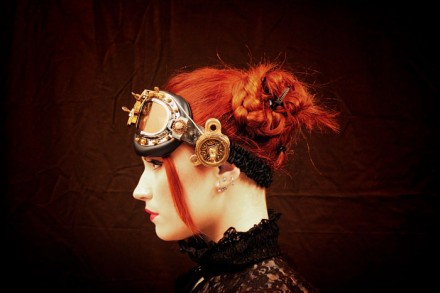
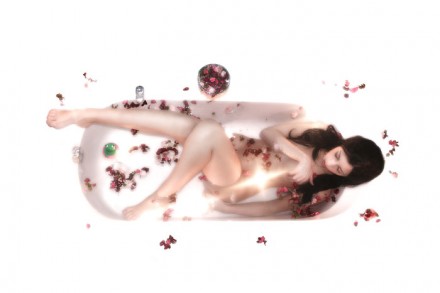
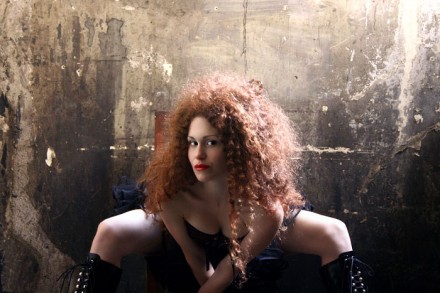
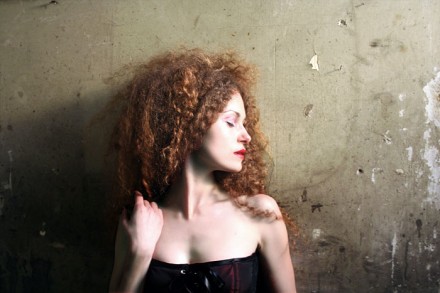
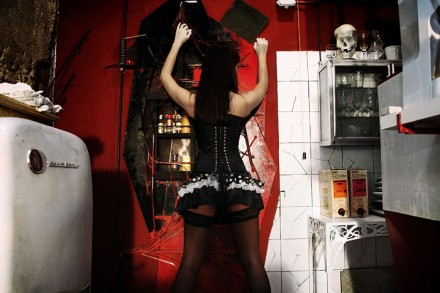
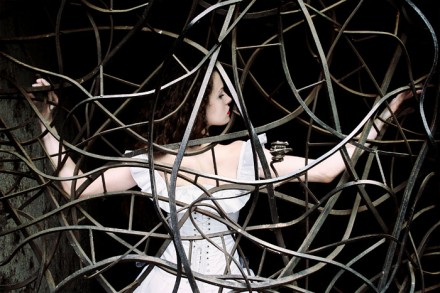
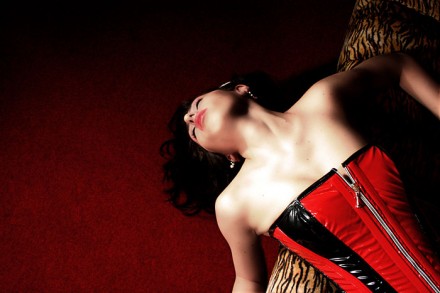
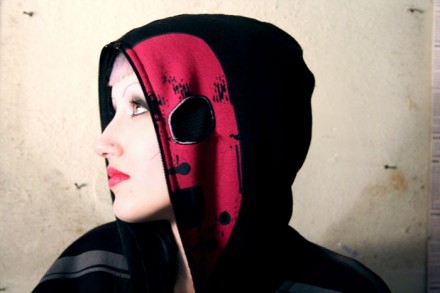
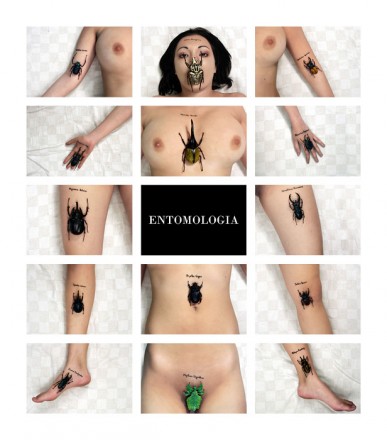
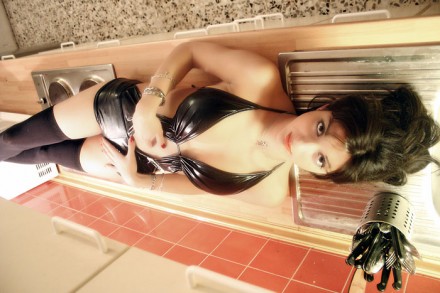
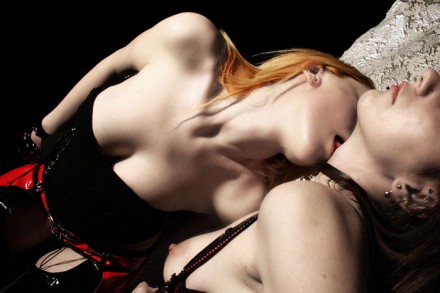
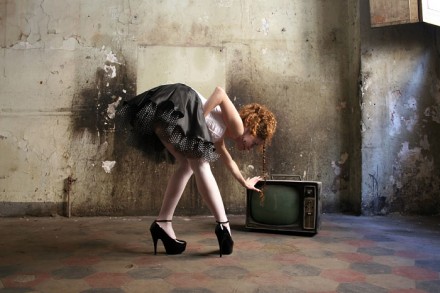
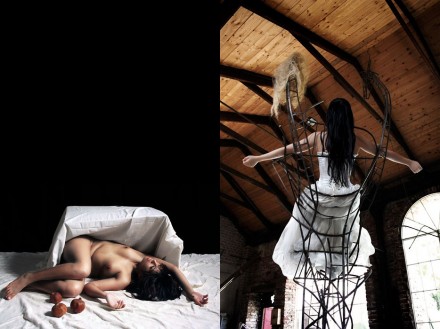
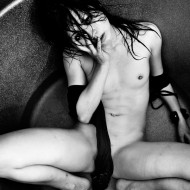

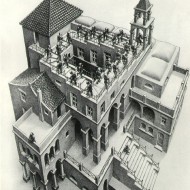
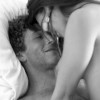
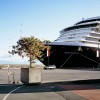





























Ah, so nice! Like evil fashion magazine, ha ha ha! Really like the quality these images.
You can also subscribe to this post comments RSS feed.